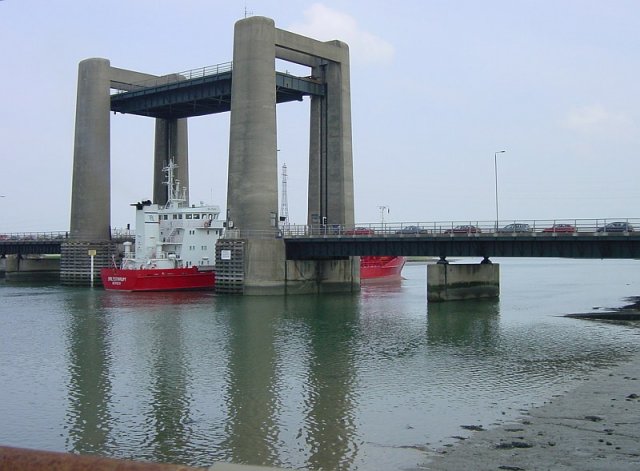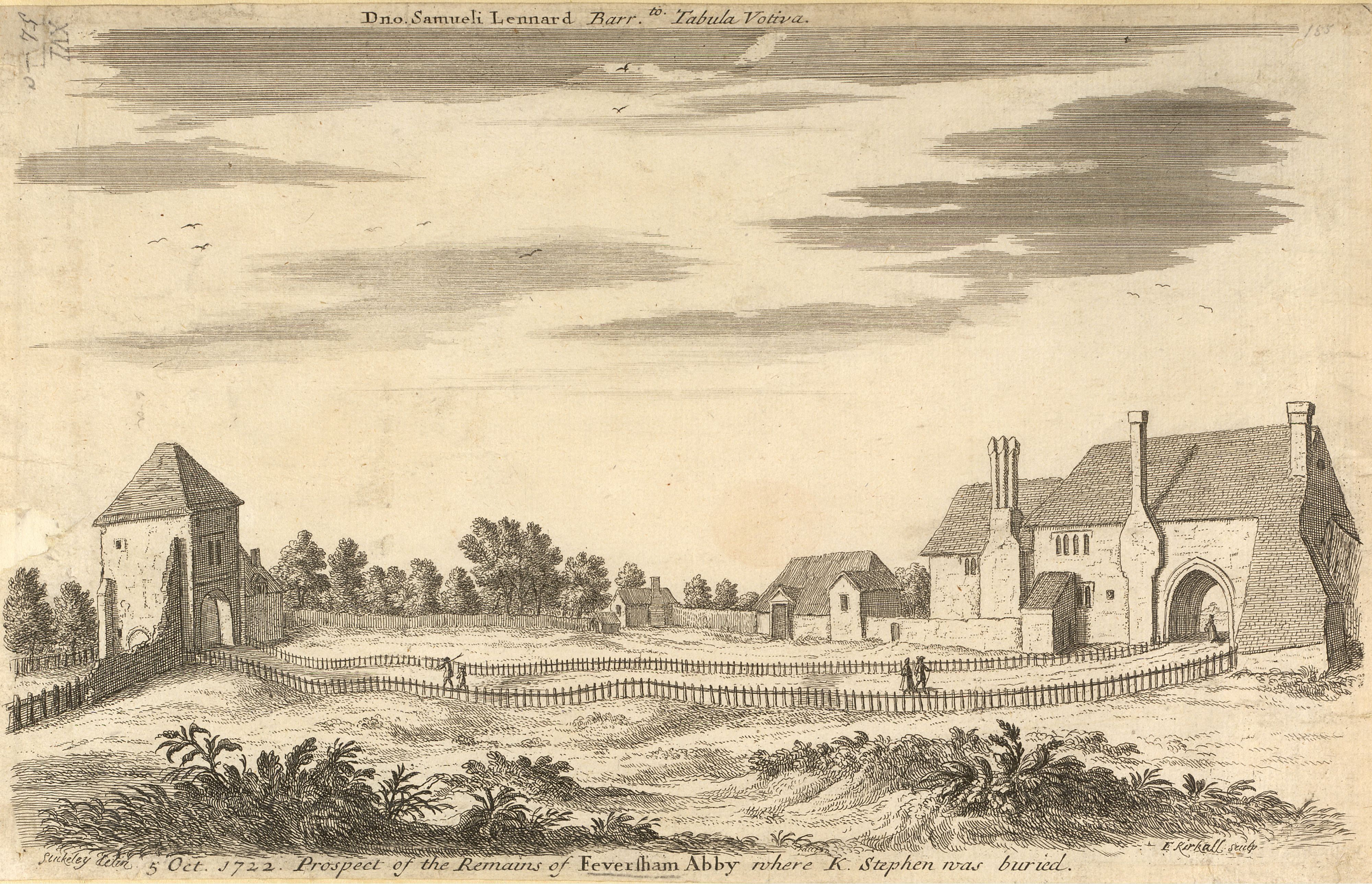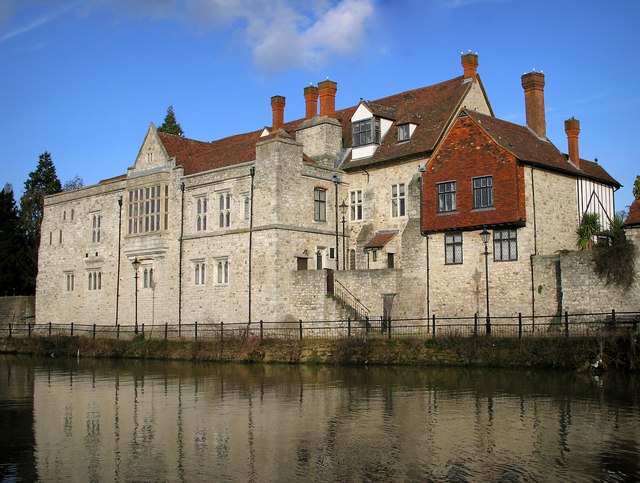|
Stalisfield
Stalisfield is a village in the borough of Swale in Kent, England, located on a secondary road about 1½ miles (2.4 km) north of Charing and 5 miles south west of Faversham. The parish includes the hamlet of Stalisfield Green. Stalisfield Green lies high on the North Downs (a designated Area of Outstanding Natural Beauty), some 650 feet above sea level, and close to the escarpment above Charing. History It was once anciently called 'Starchfield'. It is called in the Domesday survey 'Stanefelle', which means Stonefield. At the time of the Domesday survey the village belonged to Odo, Earl of Kent, (as the Bishop of Bayeux). After Odo's trial for fraud the village was passed to Adam de Port. Then it passed (along with Oare) to Arnulf Kade, who gave it to the Knights Hospitallers. In 1545 it passed to Sir Anthony St. Leger. It was then sold in 1551 to Sir Anthony Aucher (the father of Anthony Aucher). In 1567 it was sold to Sir Nicholas Salter. In 1699 it was sold to Mr ... [...More Info...] [...Related Items...] OR: [Wikipedia] [Google] [Baidu] |
William Lynch (diplomat)
Sir William Lynch (c. 1730 – 25 August 1785) was a British diplomat and politician who sat in the House of Commons between 1762 and 1780. Lynch was the eldest son of John Lynch, DD Dean of Canterbury, and his wife Mary Wake, daughter of William Wake, Archbishop of Canterbury.''Parishes: Staple'', The History and Topographical Survey of the County of Kent: Volume 9 (1800) pp. 185–190. Date accessed: 22 November 2010. Lynch was elected for |
Borough Of Swale
Swale is a local government district with borough status in Kent, England and is bounded by Medway to the west, Canterbury to the east, Ashford to the south and Maidstone to the south west. Its council is based in Sittingbourne. The district is named after the narrow channel called The Swale, that separates the mainland of Kent from the Isle of Sheppey, and which occupies the central part of the district. The district was formed in 1974 under the Local Government Act 1972, from the Borough of Faversham; the Borough of Queenborough-in-Sheppey, which covered the whole of Sheppey; the Sittingbourne and Milton Urban District; and Swale Rural District. Most of the southern half of the Borough lies within the Kent Downs Area of Outstanding Natural Beauty, whilst Sittingbourne and the Isle of Sheppey forms the concluding part of the Thames Gateway growth area. There are four towns in the borough: Sittingbourne and Faversham on the mainland, and Sheerness and Queenborough on S ... [...More Info...] [...Related Items...] OR: [Wikipedia] [Google] [Baidu] |
Wealden Hall House
The Wealden hall house is a type of vernacular medieval timber-framed hall house traditional in the south east of England. Typically built for a yeoman, it is most common in Kent (hence "Wealden" for the once densely forested Weald) and the east of Sussex but has also been built elsewhere. Kent has one of the highest concentrations of such surviving medieval timber-framed buildings in Europe. The original floor plan usually had four bays with the two central ones forming the main hall open to the roof with the hearth in the middle and two doors to the outside at one end forming a cross passage. The open hearth was later moved towards the cross passage and became a fireplace with chimney, sometimes the chimney pile even blocking the cross passage, which had soon been screened off the main hall. Beyond the cross passage the outer bay at the "screens end" or "lower end" of the hall, usually contained two rooms commonly called buttery and pantry, while the rooms in the bay at ... [...More Info...] [...Related Items...] OR: [Wikipedia] [Google] [Baidu] |
Villages In Kent ...
__NOTOC__ See also *List of settlements in Kent by population * List of civil parishes in Kent * :Civil parishes in Kent * :Towns in Kent * :Villages in Kent * :Geography of Kent *List of places in England {{Kent Places Kent Kent is a county in South East England and one of the home counties. It borders Greater London to the north-west, Surrey to the west and East Sussex to the south-west, and Essex to the north across the estuary of the River Thames; it faces ... [...More Info...] [...Related Items...] OR: [Wikipedia] [Google] [Baidu] |
Faversham
Faversham is a market town in Kent, England, from London and from Canterbury, next to the Swale, a strip of sea separating mainland Kent from the Isle of Sheppey in the Thames Estuary. It is close to the A2, which follows an ancient British trackway which was used by the Romans and the Anglo-Saxons, and known as Watling Street. The name is of Old English origin, meaning "the metal-worker's village". There has been a settlement at Faversham since pre-Roman times, next to the ancient sea port on Faversham Creek. It was inhabited by the Saxons and mentioned in the Domesday Book of 1086 as ''Favreshant''. The town was favoured by King Stephen who established Faversham Abbey, which survived until the Dissolution of the Monasteries in 1538. Subsequently, the town became an important seaport and established itself as a centre for brewing, and the Shepherd Neame Brewery, founded in 1698, remains a significant major employer. The town was also the centre of the explosives industry ... [...More Info...] [...Related Items...] OR: [Wikipedia] [Google] [Baidu] |
Borough
A borough is an administrative division in various English-speaking countries. In principle, the term ''borough'' designates a self-governing walled town, although in practice, official use of the term varies widely. History In the Middle Ages, boroughs were settlements in England that were granted some self-government; burghs were the Scottish equivalent. In medieval England, boroughs were also entitled to elect members of parliament. The use of the word ''borough'' probably derives from the burghal system of Alfred the Great. Alfred set up a system of defensive strong points (Burhs); in order to maintain these particular settlements, he granted them a degree of autonomy. After the Norman Conquest, when certain towns were granted self-governance, the concept of the burh/borough seems to have been reused to mean a self-governing settlement. The concept of the borough has been used repeatedly (and often differently) throughout the world. Often, a borough is a single town with ... [...More Info...] [...Related Items...] OR: [Wikipedia] [Google] [Baidu] |
New Hall Edit
New is an adjective referring to something recently made, discovered, or created. New or NEW may refer to: Music * New, singer of K-pop group The Boyz Albums and EPs * ''New'' (album), by Paul McCartney, 2013 * ''New'' (EP), by Regurgitator, 1995 Songs * "New" (Daya song), 2017 * "New" (Paul McCartney song), 2013 * "New" (No Doubt song), 1999 *"new", by Loona from '' Yves'', 2017 *"The New", by Interpol from ''Turn On the Bright Lights'', 2002 Acronyms * Net economic welfare, a proposed macroeconomic indicator * Net explosive weight, also known as net explosive quantity * Network of enlightened Women, a conservative university women's organization * Next Entertainment World, a South Korean film distribution company Identification codes * Nepal Bhasa language ISO 639 language code * New Century Financial Corporation (NYSE stock abbreviation) * Northeast Wrestling, a professional wrestling promotion in the northeastern United States Transport * New Orleans Lakefront Air ... [...More Info...] [...Related Items...] OR: [Wikipedia] [Google] [Baidu] |
Maidstone
Maidstone is the largest Town status in the United Kingdom, town in Kent, England, of which it is the county town. Maidstone is historically important and lies 32 miles (51 km) east-south-east of London. The River Medway runs through the centre of the town, linking it with Rochester, Kent, Rochester and the Thames Estuary. Historically, the river carried much of the town's trade as the centre of the agricultural county of Kent, known as the Garden of England. There is evidence of settlement in the area dating back before the Stone Age. The town, part of the borough of Maidstone, had an approximate population of 100,000 in 2019. Since World War II, the town's economy has shifted from heavy industry towards light industry and services. Toponymy Anglo-Saxon period of English history, Saxon charters dating back to ca. 975 show the first recorded instances of the town's name, ''de maeides stana'' and ''maegdan stane'', possibly meaning ''stone of the maidens'' or ''stone of the ... [...More Info...] [...Related Items...] OR: [Wikipedia] [Google] [Baidu] |
Goachers Brewery
Goachers Brewery is an independent brewery based in Maidstone, which supplies a number of public houses across Kent. Range Goachers only uses malt and Kentish hops in its beers, producing a core range of ales comprising a mild, two bitter ales, a stout and a pale ale. It also produces regular seasonal ales. * Real Mild Ale is a dark mild with an ABV of 3.4% that is hopped with Kent Fuggles * Fine Light Ale is a pale bitter with an ABV of 3.7% hopped with WGV and East Kent Golding hops * Best Dark Ale is a rich bitter with an ABV of 4.1% hopped with East Kent Golding hops * Silver Star Ale is a seasonal pale ale with an ABV of 4.2% hopped with Kent Fuggles. This was first produced in 2008 to celebrate Goacher's 25th anniversary * Crown Imperial Stout is a seasonal 4.5% ABV stout with a high level of Kent Fuggles hops * Gold Star Ale is a pale ale with an ABV of 5.1% and hopped with East Kent aroma hops * Old 1066 Ale is a seasonal barley wine with an ABV of 6.7% and produced i ... [...More Info...] [...Related Items...] OR: [Wikipedia] [Google] [Baidu] |
Ramsgate
Ramsgate is a seaside resort, seaside town in the district of Thanet District, Thanet in east Kent, England. It was one of the great English seaside towns of the 19th century. In 2001 it had a population of about 40,000. In 2011, according to the Census, there was a population of 40,408. Ramsgate's main attraction is its coastline, and its main industries are tourism and fishing. The town has one of the largest marinas on the English south coast, and the Port of Ramsgate provided cross-English channel, channel ferries for many years. History Ramsgate began as a fishing and farming hamlet. The Christian missionary Augustine of Canterbury, St Augustine, sent by Pope Gregory I, Pope Gregory the Great, landed near Ramsgate in 597AD. The town is home to the Pugin's Church and Shrine of St Augustine, Shrine of St Augustine. The earliest reference to the town is in the Kent Hundred Rolls of 1274–5, both as ''Remmesgate'' (in the local personal name of ‘Christina de Remmesgate ... [...More Info...] [...Related Items...] OR: [Wikipedia] [Google] [Baidu] |
Newnham, Kent
Newnham is a village and civil parish in the Syndale valley in Kent, England, in the administrative borough of Borough of Swale, Swale near the medieval market town of Faversham. History Newnham has existed as a community of dwellings and work-units for at least 1,000 years. Though it had a lord of the manor and the church of SS Peter and Paul at the beginning of the 12th century, it could be said that nothing of importance ever happened there; yet in it took place centuries of everyday social history and a history of domestic and economic life of generations of English people. Originally little more than a grouping of farmhouses and farmworkers' cottages clustered around a church and pub, both more than 600 years old, the village featured blacksmiths, a draper, a butcher, a baker and several other shops and pubs by the early 20th century. Even until the Second World War, most of its inhabitants were born, worked, lived and died in the valley. Many of the men worked ... [...More Info...] [...Related Items...] OR: [Wikipedia] [Google] [Baidu] |
Hall House
The hall house is a type of vernacular house traditional in many parts of England, Wales, Ireland and lowland Scotland, as well as northern Europe, during the Middle Ages, centring on a hall. Usually timber-framed, some high status examples were built in stone. Unaltered hall houses are almost unknown. Where they have survived, they have almost always been significantly changed and extended by successive owners over the generations. Origins In Old English, a "hall" is simply a large room enclosed by a roof and walls, and in Anglo-Saxon England simple one-room buildings, with a single hearth in the middle of the floor for cooking and warmth, were the usual residence of a lord of the manor and his retainers. The whole community was used to eating and sleeping in the hall. This is the hall as Beowulf understood it. Over several centuries the hall developed into a building which provided more than one room, giving some privacy to its more important residents. A significant house ... [...More Info...] [...Related Items...] OR: [Wikipedia] [Google] [Baidu] |





